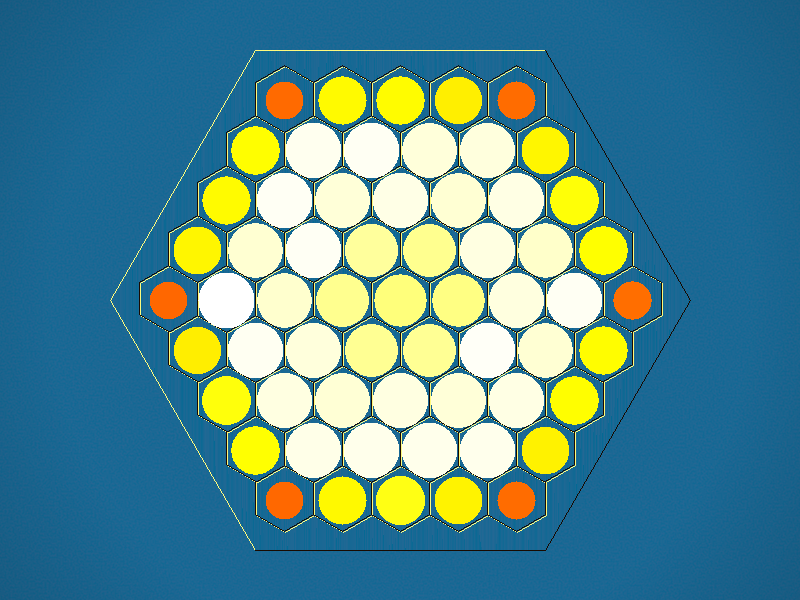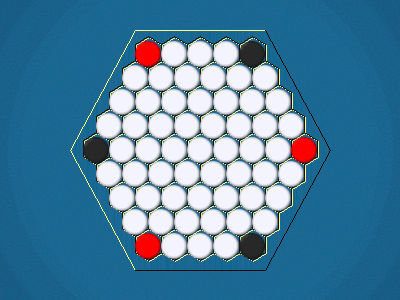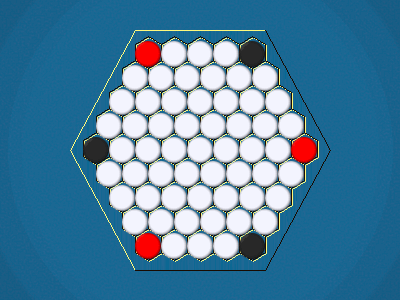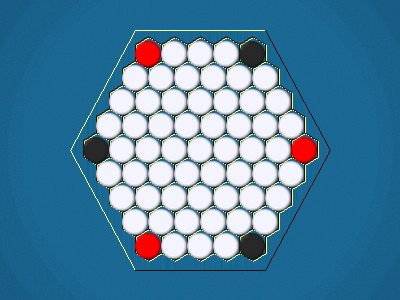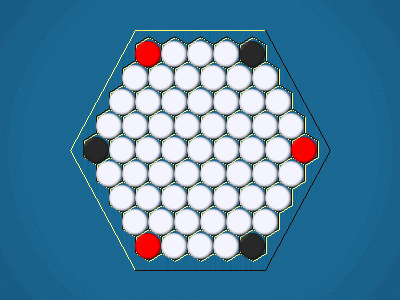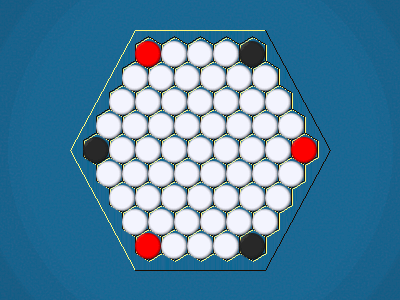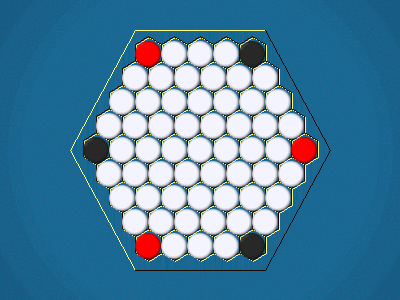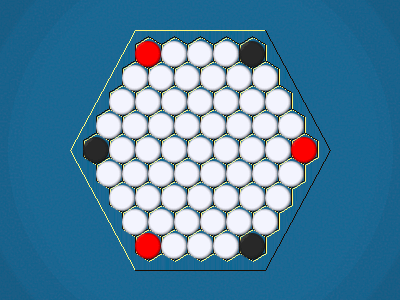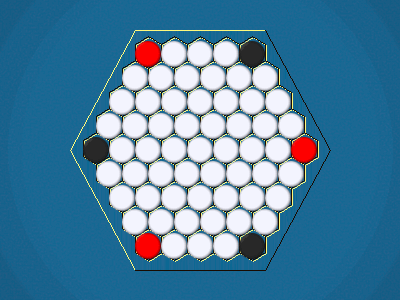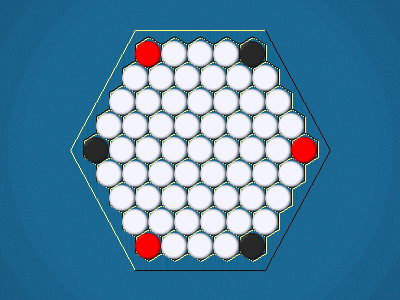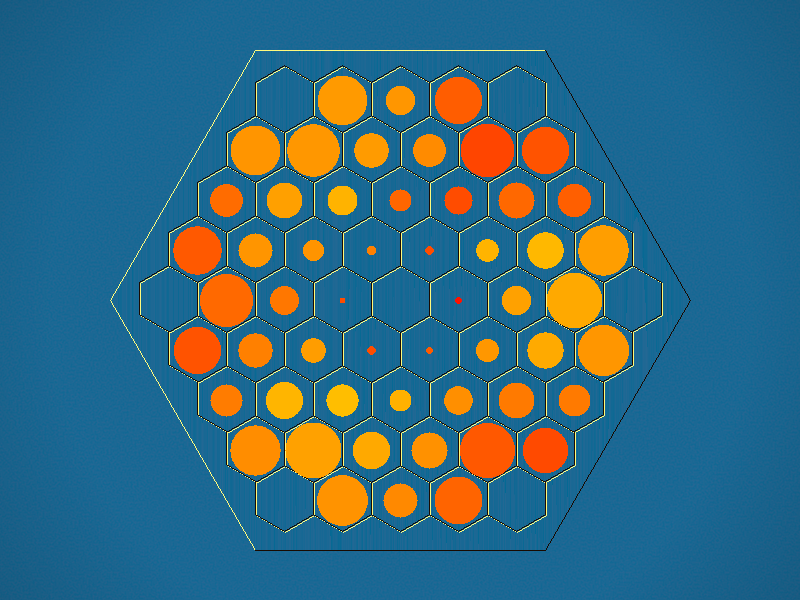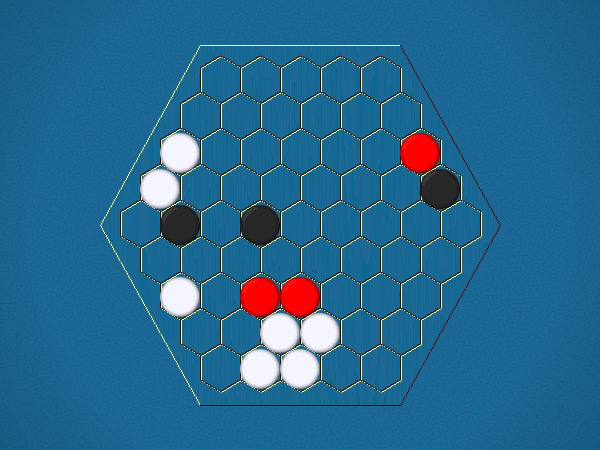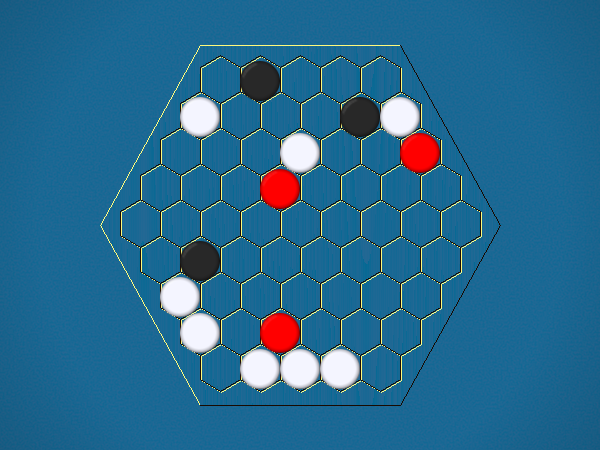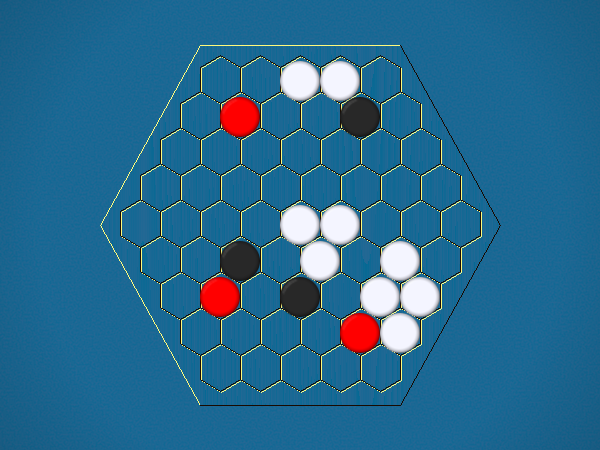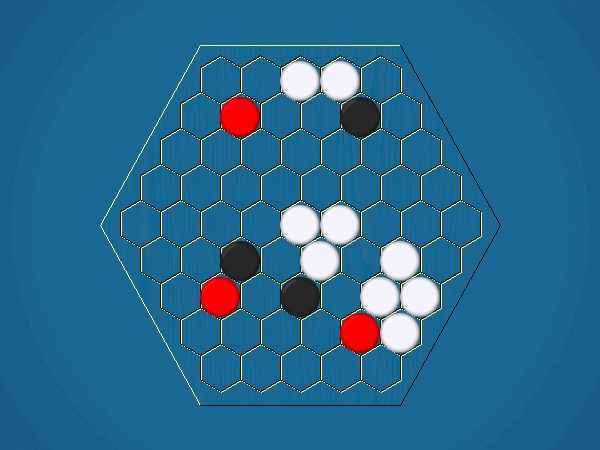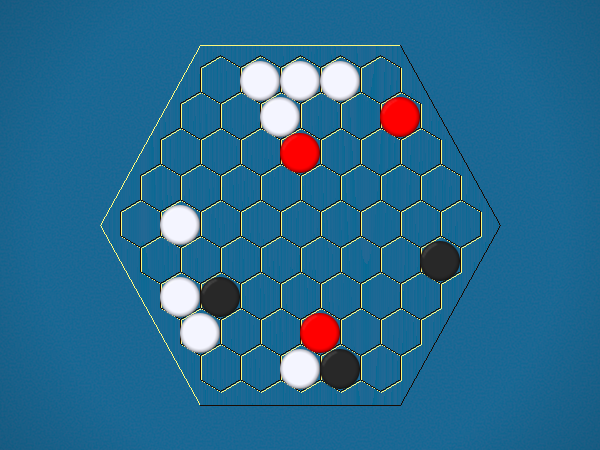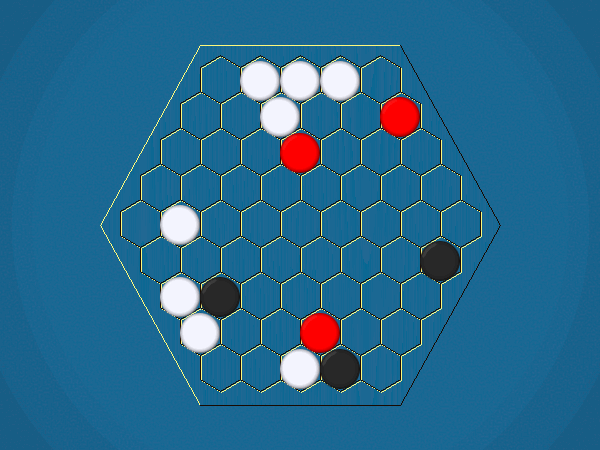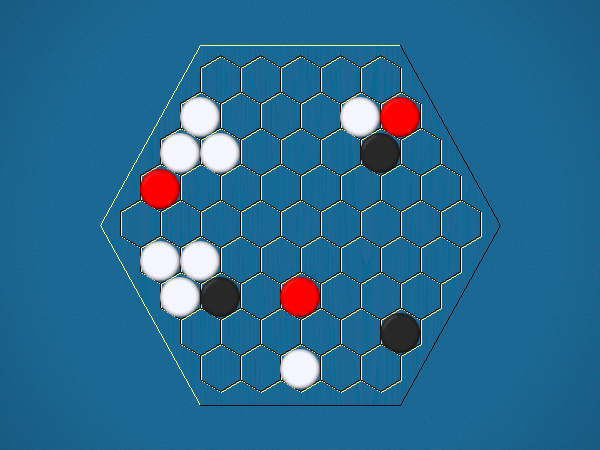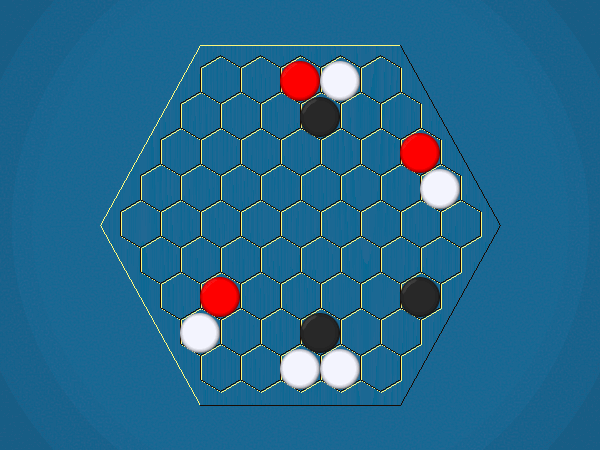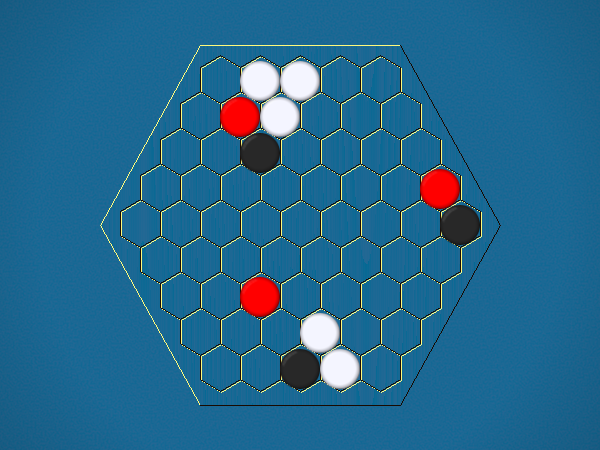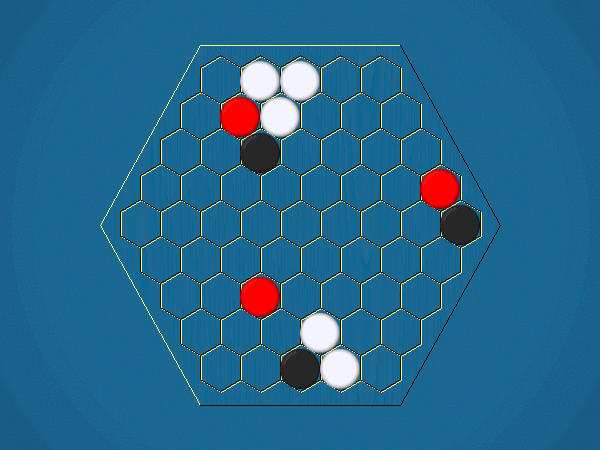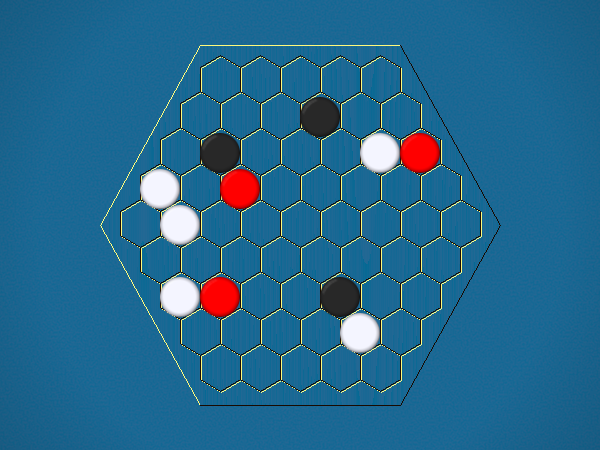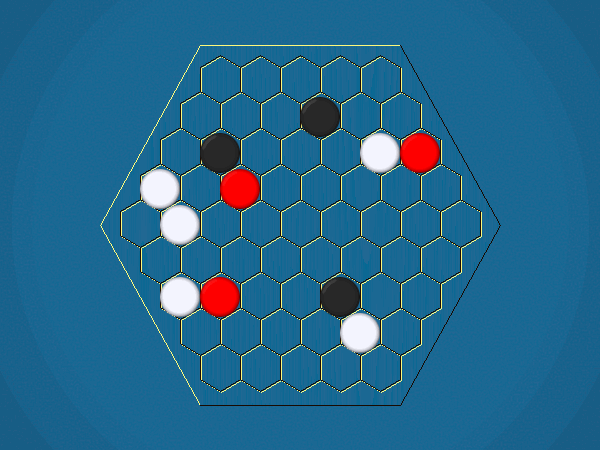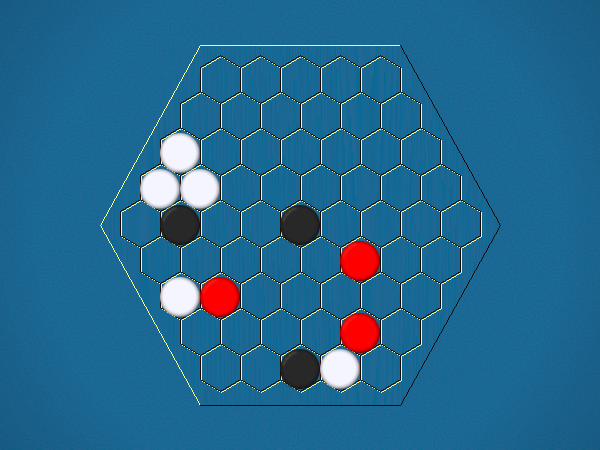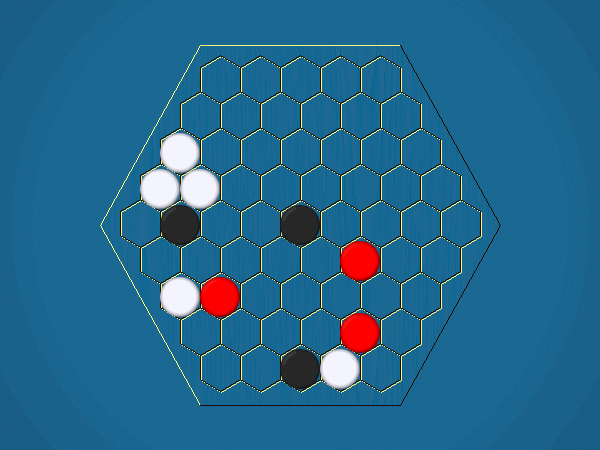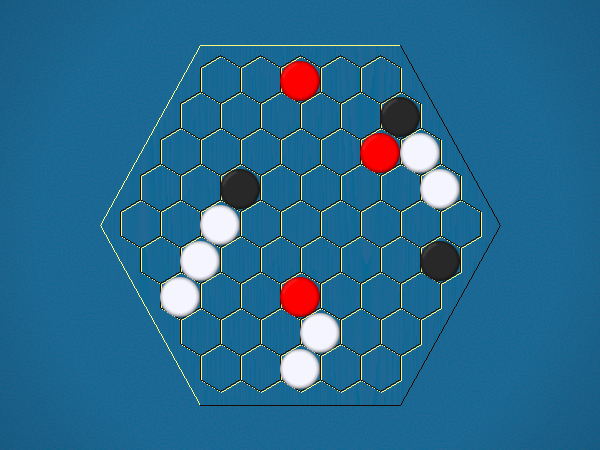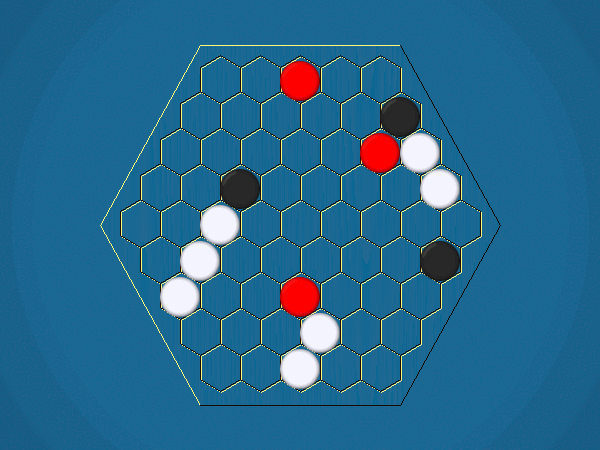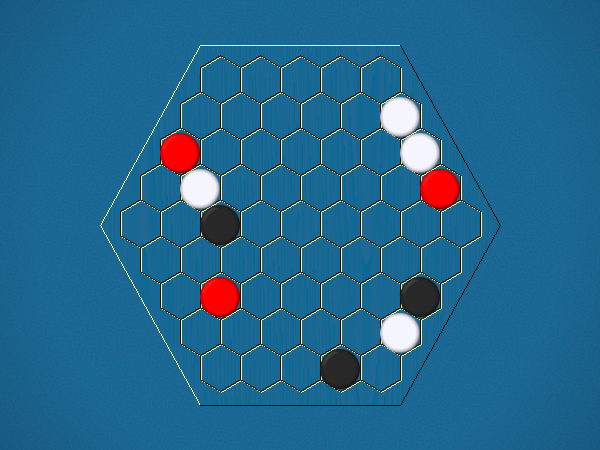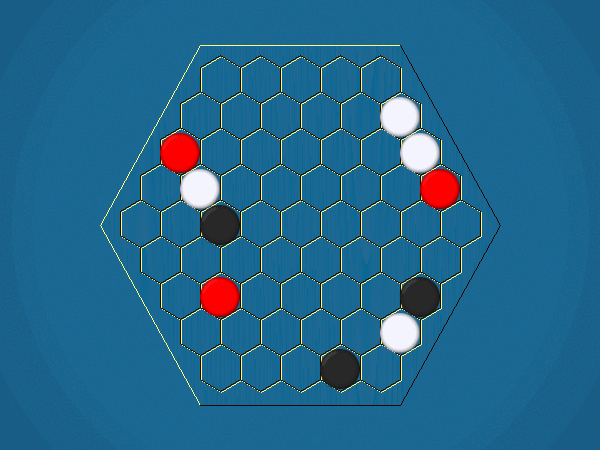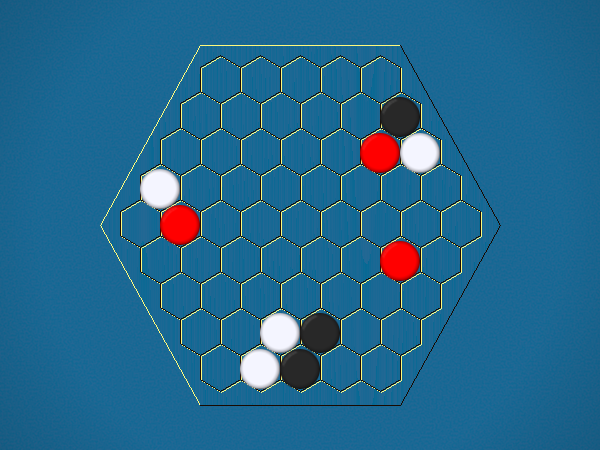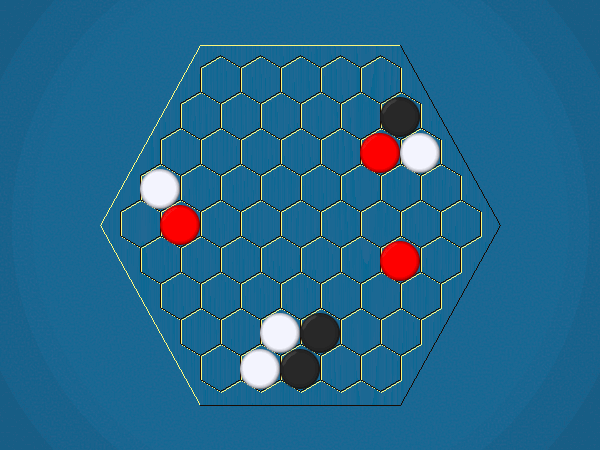Rules
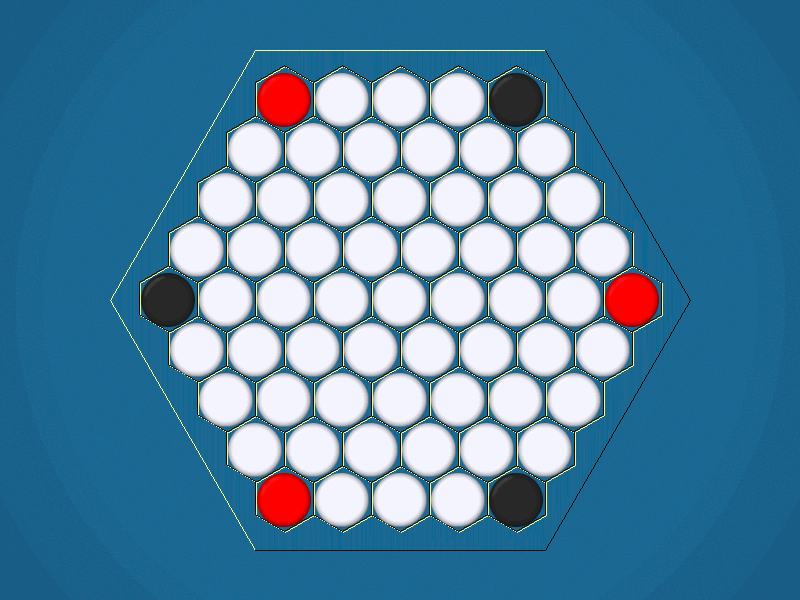
Representative game (in the sense of being of mean length). Wherever you see the 'representative game' referred to in later sections, this is it!
Full rules, including illustrations, are available at Mark Steere Games.
MOVES
You must move one of your ships to an adjacent cell which doesn't contain another ship. By moving to a cell containing an iceberg, you capture the iceberg, and your score increases by 1.
MOVE DIRECTION
You must select one of your ships to move, and move it closer to its closest iceberg. Distance is measured by the number of cells between ship and iceberg along the shortest path of cells that connects them, going around other ships. If the ship you've chosen to move has icebergs adjacent to it, you must capture one of them.>/p>
OBJECT OF THE GAME
The goal is to capture the majority of the icebergs. On a size 5 board, there are 55 icebergs starting out. If you capture 28 of them, youwin.


